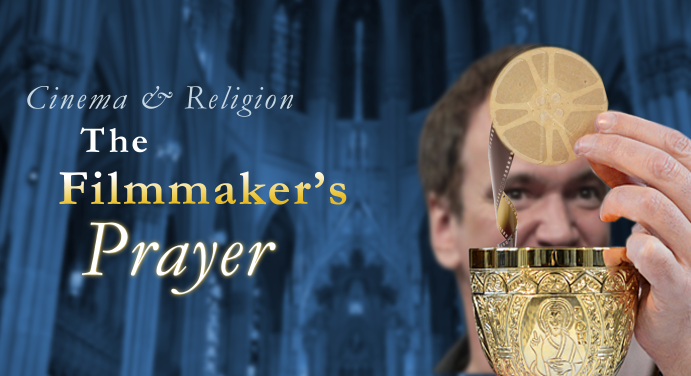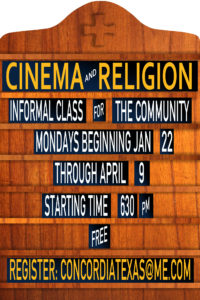Faith and Film at the Historic Georgetown Palace Theater

Three years after being shut down due to the pandemic, Cinema & Religion returned as Faith and Film, hosted at The Palace Theater* on the historic square in Georgetown, Texas. The series was held four Sundays in July and four in October.
The series at The Palace resumes June 2 with four great films to discuss, led by four capable respondents.
Now in its eighth season, this informal class is produced by film scholar Dr. Philip J. Hohle, an adjunct professor of Mass Media at Mary Hardin-Baylor University. A member of the prestigious Society for the Cognitive Study of the Moving Image (SCSMI), Hohle has authored several books and articles on viewer responses to movies.
In The Filmmaker’s Prayer: Cinema & Religion, Hohle argues that virtually all movies project a surprising degree of religiosity. “Most good films subtly express a certain worldview, a statement about the human condition: Who am I? Am I a good person? What is my redeeming purpose in life? Certainly, those are some of the fundamental questions of religion, and many movies invite an examination from that perspective. If we don’t, we miss some profound ideas and lessons.”
Noted Professor of Theology and Culture at Fuller Seminary, Dr. Robert Johnson, has stated that the cinema’s storytellers have become the new priests of our culture. As such, the movie theater has become another great competitor for the church because great movies inspire people in profound ways.
The current four-week class is funded through a grant by Zion Lutheran Church and School of Walburg, Texas and other patrons. The course concept is similar to an ESL class for non-native English speakers, but in this case, it is entertainment as a second language. This series was designed to help viewers develop a higher sense of media literacy and fluency in interpreting the films they see. Faith and Film is designed for anyone who wants to develop a higher awareness or appreciation for the inspirational power of movies.
The course will feature free screenings of selected films at The Palace each evening. Every screening is followed by an open discussion led by Hohle and other area scholars, practitioners, and theologians.
“There is no better setting to truly consider the richness of the film narrative than in a comfortable movie theater with an audience,” Hohle said. “While our respondents primarily speak through the lens of Christianity, we really learn from each other as we take the time afterward to unpack and share the personal religious experience the film provides for each of us.”
REGISTER HERE.
For more information, email philip@parabolicmedia.com or visit the frequently asked questions page.
*The Faith and Film Informal Class is a production of Parabolic Media, made possible through grants from Zion Lutheran Church and School and other patrons. Viewers should be aware that some of the movies to be examined contain violence, sexual situations, and rough language. Be it further known that the views and opinions expressed do not necessarily reflect those of the staff, governing board, or patrons of The Georgetown Palace Theater.



